Coty and the 1939 New York World’s Fair
Buoyed by the success of the 1933 Chicago ‘Century of Progress’ World’s Fair, New York City’s civic and business leaders decided to hold one in their city in 1939, ostensibly to mark the 150th anniversary of the inauguration of George Washington. It was hoped that the fair would stimulate the local economy which, like elsewhere, was suffering from the effects of the Great Depression. In 1935, the New York World’s Fair 1939 Corporation was established with Grover A. Whalen as its president. The unifying theme for the fair, ‘Building the World of Tomorrow’, held out the promise of a more prosperous future.
Cosmetics Building
In 1937, Herman L. Brooks [1898-1968?] president of the Toilet Goods Association and general manager and treasurer of Coty, Paul H. Douglas [1896-1965] assistant to the general manager of Bourjois and Cecil Smith [1912-2004], president of Yardley began considering plans for a cosmetic display at the fair (Cosmetics in N. Y. World Fair, 1937, p. 387) to be housed in an exhibition hall built specifically for the cosmetics industry. The rotunda of the proposed building was to resemble a giant powder puff box, with an interior developed by Donald Deskey [1894-1989], the interior designer of the Radio City Music Hall.

Above: Model for the Cosmetic Building with the ramps to the railway station on the right. The exterior of the rotunda is shaped to look like a powder box topped with a handle.
Display space in the Cosmetics Building was to be sold and managed through a separate company, Perfumery and Cosmetics Exhibits, Inc., established with Herman L. Brooks [1898-1968?] as its president.

Above: Contract signing for the Cosmetics Building. Seated: Grover A. Whalen (left) and Herman L. Brooks (right). Donald Deskey is standing directly behind Herman Brooks.
At the ceremony to mark the foundation of the Cosmetics Building representatives of companies involved in the American perfume, cosmetics and toiletries industry were invited to add items to a strong box which was sealed into the cornerstone of the new building. A competition was held to decide a name for the completed building with the winning entry being ‘Vanity Fair’.

Above: Collecting items for the strong box.

Above: Herman L. Brooks sealing the strong box into the cornerstone of the Cosmetics Building with Grover A. Whalen looking on. The fate of the strong box is unknown to me. It was supposed to be removed to a granite monolith in the Santa Rita Mountains in Arizona when the building was demolished and left there unopened until 2939.
Although a number of cosmetic company representatives attended the foundation ceremony, the turnout was disappointing. This reflected a general disinterest by the cosmetics industry in the fair which resulted in Brooks being unable to sign enough tenants to fill the building’s exhibition space. The fair organisers contemplated turning the Cosmetics Building into a display hall for automobiles but late in the day the building was saved by Brooks. As well as being the president of Perfumery and Cosmetics Exhibits, Inc., Brooks was also the president of Coty and he used his position there to persuade Coty to lease the rotunda. Grover Whalen was a Coty director so I imagine he supported Brooks on the Coty board.
Maison Coty
After taking over the rotunda, Brooks made a number of changes to the exterior of the building. The original plans for the structure had it topped off with a handle, which during construction became a large gold ball. After the arrangement with Coty was reached, this was replaced by an illuminated representation of a Coty Air-Spun powder box.
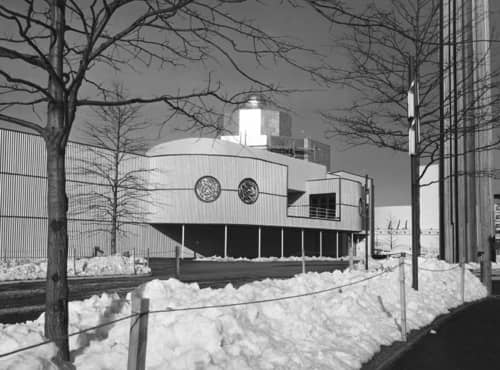
Above: Cosmetic building nearing completion with the rotunda topped with a gold ball.
The Coty name and coat of arms was also added to the main entrance and the rotunda was then referred to by Coty as the Maison Coty (House of Coty) or the ‘Charm Center of the World’s Fair’. Other exhibitors housed in the building were situated in an area that used the original competition name, ‘Vanity Fair’.
Coty also made changes to the rotunda interior. Some features of the central atrium – the Hall of Perfumes – were redecorated by the interior designer Dorothy Draper [1889-1969]. These included removing a large abstract statue by Deskey and the installation of a large a Fountain of Beauty, designed in Draper’s signature style of ‘Modern Baroque’. Coty displays, exhibits and shops were then set in place around the circumference of the atrium.

Above: The Fountain of Beauty in the Hall of Perfumes. The Sub-Deb Beauty Shop can be seen on the left.
Large posters of Coty products were arranged prominently on the walls of the Hall of Perfumes. These advertised the company’s perfumes, Air Spun loose and compact face powders, Air Spun rouge, and Sub-Deb lipsticks and rouge. The small theatre included in the original plans was used by Coty to screen films such as ‘Symphonies in Fragrance’ and to give the occasional lecture. Coty also a set up a museum displaying the 50 or so ingredients used to make perfumes.
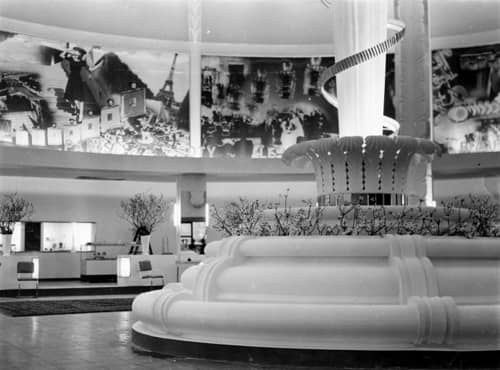
Above: The base of the Fountain of Beauty in the Hall of Perfumes surrounded by Coty posters and little shops, many of which were devoted to individual perfumes made by Coty.

Above: The other side of the Hall of Perfumes.

Above: Sub-Deb Beauty Shop where visitors could get information about Coty make-up and try Sub-Deb lipsticks.
Coty also installed a complete air-powered microniser operated by a white-smocked crew to demonstrate how the company made its Air Spun powders, and a production unit showing how Sub-Deb lipsticks were produced and packaged.
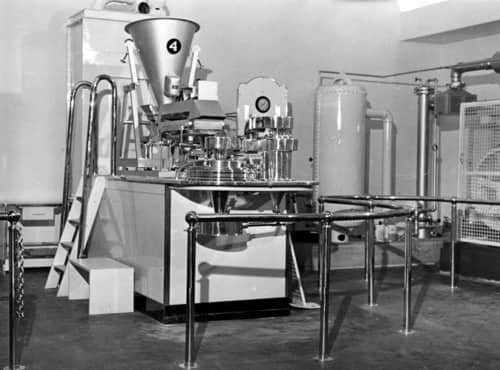
Above: Coty air-powered microniser at the World’s Fair.
See also: Coty ‘Air Spun’ Powder
The New York World’s Fair opened April 30, 1939. Although 25 million visited the fair that year attendances were well short of the 50 million needed to repay investors so it was decided to extend the exposition for an additional year to help recover costs. However, the start of the Second World War in September 1939 meant that many nations did not return for the second season and attendances in 1940 were lower than those in 1939.
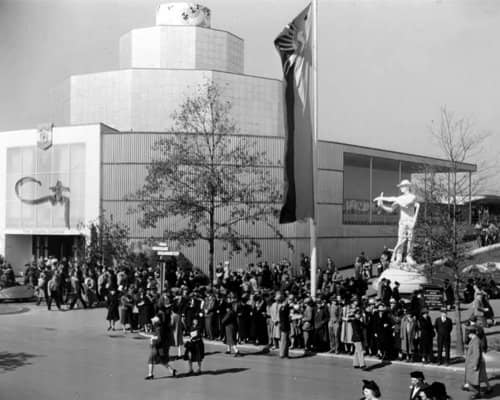
Above: 1939 Queue to get into Maison Coty.

Above: Coty guides at the end of the 1939 season.
Over 7,000,000 people visited Maison Coty in the two years it operated at the World’s Fair – over 4,000,000 in 1939 and more than 3,000,000 in the 1940 season – which meant that a large number of people were exposed to Coty products. The value of exhibiting to the public in this way was one of the reasons behind the decision by Coty to lease space at the Rockefeller Center in New York and open a Maison Coty there in June, 1941.
See also: Coty
Updated: 24th July 2017
Sources
Cosmetics in N. Y. World Fair. (1937). The Drug and Cosmetic Industry. September, 41(13), 387.
Cotter, B. (2009) Images of America: The 1939 New York world’s fair. Charleston, SC: Arcadia Publishing.
Coty, Inc. Annual Reports 1939-1940.
Digital collections from the New York public library. Retrieved July 1, 2016 from http://digitalcollections.nypl.org/
Guide to the New York world’s fair 1939 and 1940 incorporated records 1935-1945 (2008). Retrieved June 20, 2016 from https://www.nypl.org/sites/default/files/archivalcollections/pdf/nywf39fa.pdf
Whalen, G. A. (1955). Mr. New York: The autobiography of Grover A. Whalen. New York: G. P. Putnam’s Sons.
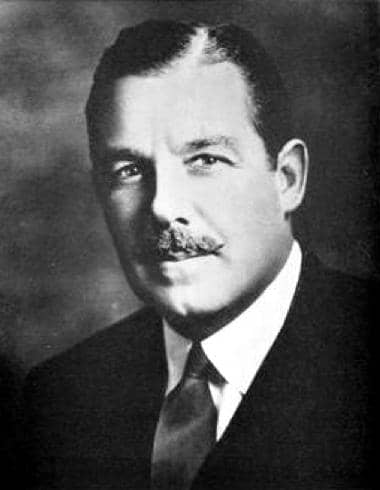
Grover A. Whalen [1886-1962], president of the New York World’s Fair 1939 Corporation. He was also on the Coty board.
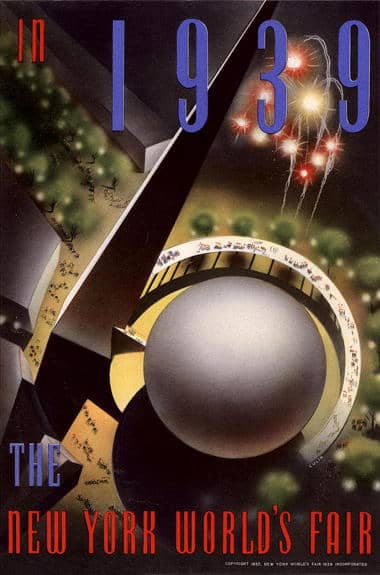
1937 Poster for the upcoming 1939 New York World’s Fair.
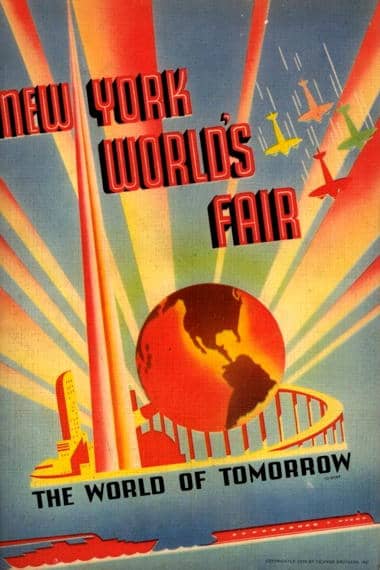
1939 New York World’s Fair Brochure cover.
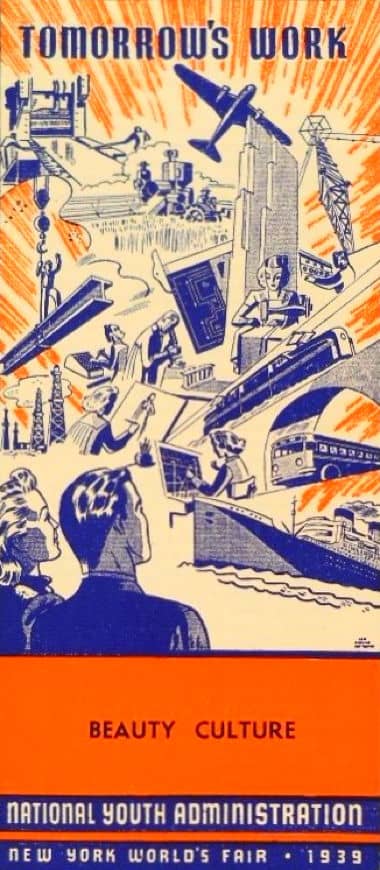
1939 Cover for a booklet produced by the National Youth Administration, a New Deal initiative. Employment was a major interest of the fair.

Part of the site plan for the 1939 World’s Fair. The Cosmetics Building (shaded red) is situated next to the railway station.
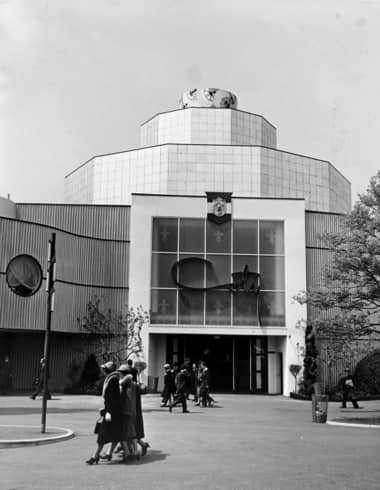
1939 Cosmetics Building by the architects Cross & Cross and John Hironimus. The rotunda was built to resemble a powder box but underwent some modifications after it was taken over by Coty. The Coty name and coat of arms were added to the front entrance and a giant representation of an Air Spun powder box was added to the top of the building.
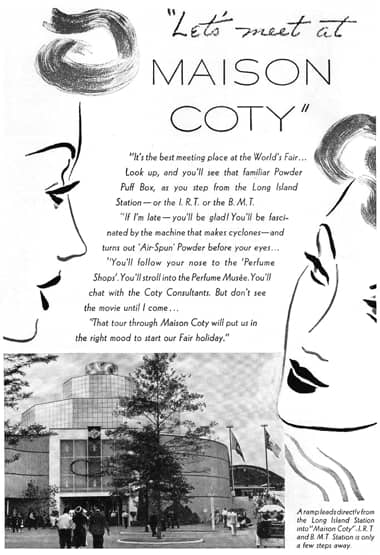
1939 “Let’s meet at Maison Coty”.
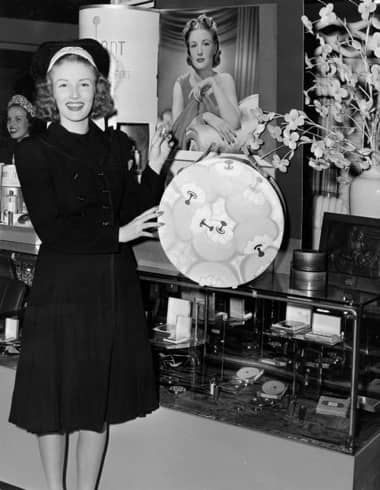
1939 Susan Shaw chooses a contestant winner.
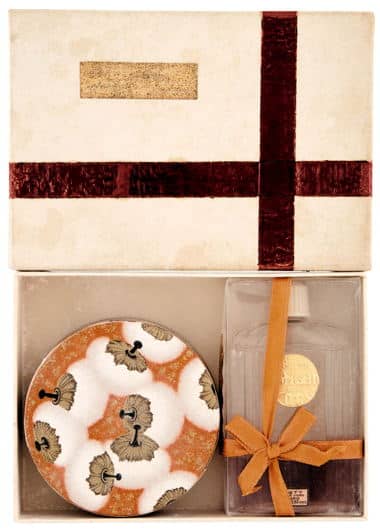
An example of one of the hundreds of thousands of souvenirs Coty sold during the World’s Fair.
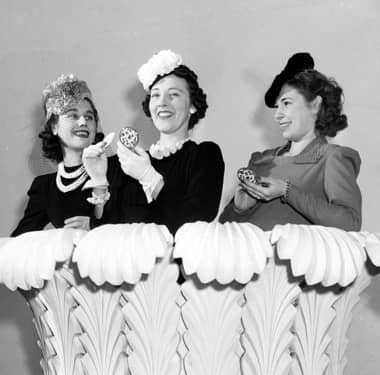
Coty guides on a podium designed by Dorothy Draper.
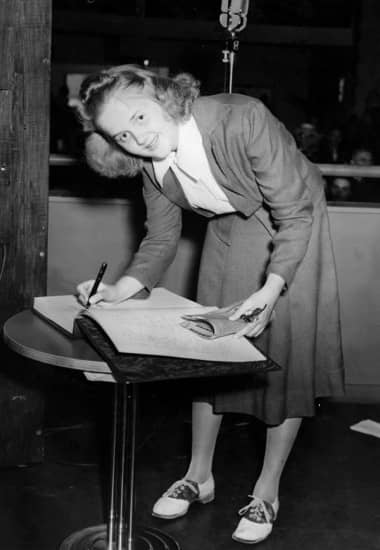
1939 Geraldine Matin, Coty’s one millionth visitor, signing the guest book.
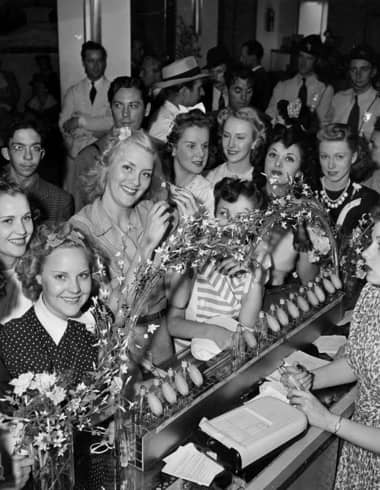
1940 Jane Manners from the musical comedy ‘Walk with Music’ at a counter in the Maison Coty.
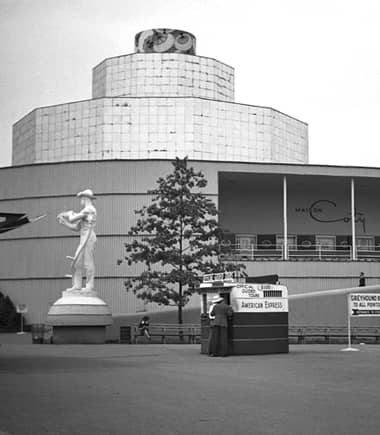
1940 Maison Coty showing the exterior deterioration in the second year of the fair.
